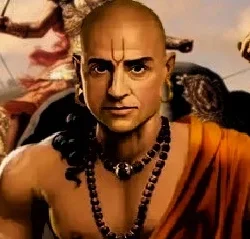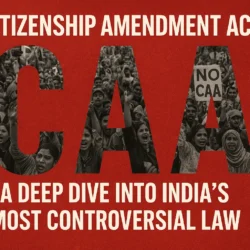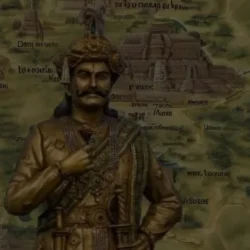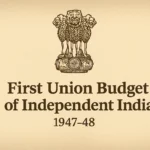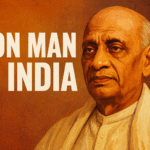Sardar Vallabhbhai Patel’s journey from a sharp-witted lawyer in Gujarat to one of India’s greatest freedom fighters is a story of courage, conviction, and transformation. His partnership with Mahatma Gandhi played a defining role, but Patel’s rise as a leader was marked by his own strength, strategy, and unyielding spirit. Known as the Iron Man of India, he turned the Gandhian ideals of truth and non-violence into organized action that mobilized millions.
The Making of a Leader: The Kheda Satyagraha
A Famine that Forged a Fighter
In 1917–18, Gujarat’s Kheda district faced a severe famine. Crops failed, cattle died, and hunger spread across villages. Yet, the British government demanded land taxes from desperate farmers. The injustice ignited Patel’s anger and compassion.
He listened to the farmers’ pleas and declared boldly, “Do not pay a single paisa.” Encouraging unity and non-violence, he organized the Kheda Satyagraha, marking his first major step in the Indian Freedom Struggle.

Source: Times Now
A Peaceful Victory
The British administration underestimated Patel. His sharp legal mind, fearless oratory, and disciplined organization forced them to concede. The movement remained completely non-violent, a testament to Patel’s leadership.
Gandhi praised Patel’s success, recognizing in him a young leader who could translate ideals into action. From that moment, Vallabhbhai Patel became one of Gandhi’s most trusted allies—but always a leader in his own right.
A Skeptic’s Transformation: The Ahmedabad Influence
From Doubt to Dedication
Before meeting Gandhi, Patel dismissed non-violence as unrealistic. But in 1918, during the Ahmedabad Mill Strike, he witnessed Gandhi resolve a fierce labor dispute without a single act of violence. The peaceful settlement astonished Patel.
He realized that justice could be achieved not through aggression, but through moral strength. The lawyer who once mocked Gandhi now stood beside him as a follower and strategist. This transformation reshaped his destiny—and India’s.
Patel, the Organizer: Mastering the Non-Cooperation Movement
A Vision for Self-Reliance
When the Non-Cooperation Movement began, Sardar Vallabhbhai Patel emerged as one of its finest organizers. He gave up his British-style suits, burned foreign clothes, and adopted khadi. His transformation inspired others to do the same.
He created local teams to promote the use of Indian goods, urging people to spin their own cloth and boycott imported products. Under his guidance, the movement in Gujarat became a disciplined, people-driven revolution.
Building Institutions of Freedom
Patel also played a key role in establishing Gujarat Vidyapith in 1920, a university promoting nationalist education. He persuaded teachers to reject government salaries and build schools that nurtured patriotism. His focus on structure, accountability, and efficiency made him indispensable to Gandhi’s vision.
Patel’s organizational skills turned ideology into implementation, laying the foundation for India’s political awakening.
Trials and Steel: The Post-Chauri Chaura Test
Loyalty Through Crisis
In 1922, when protestors killed policemen at Chauri Chaura, Gandhi abruptly suspended the Non-Cooperation Movement. The decision disheartened many Congress leaders, but Patel remained loyal. He chose silence and discipline over dissent, understanding Gandhi’s moral reasoning.
When Gandhi was later imprisoned, Patel held the Congress together. He wrote powerful essays in Navjeevan, urging people not to lose faith. He also launched a campaign against untouchability, ensuring that the flame of activism did not fade.
Strength in Solitude
With Gandhi absent, Patel became the moral and strategic pillar of the movement. His steadfastness and pragmatism during this turbulent period earned him national respect. His steel-like resilience justified his later title—the Iron Man of India.
A National Star is Born: The Nagpur Flag Satyagraha
Defying Colonial Might
In Gandhi’s absence, Patel led the Nagpur Flag Satyagraha, a bold protest for the right to hoist the Indian national flag. When demonstrators were brutally beaten and arrested, Patel intervened with legal precision and secured their release.
Beyond Gujarat
The episode elevated Patel to national prominence. Newspapers across India hailed his courage and quick action. His leadership transcended regional boundaries, establishing him as a unifying force in the Indian Freedom Struggle.
The Strength Behind the Strategy
Sardar Vallabhbhai Patel was more than Gandhi’s lieutenant—he was the architect of action. His discipline, legal brilliance, and organizational mastery turned Gandhian philosophy into a mass movement. While Gandhi provided the moral compass, Patel provided the machinery that made independence possible.
Together, they formed a partnership that defined India’s freedom era—an alliance of spirit and steel.
Conclusion: The Legacy of Sardar Vallabhbhai Patel
Sardar Vallabhbhai Patel rose from a humble background to become the unbreakable force of India’s struggle for freedom. His leadership in Kheda, Ahmedabad, and Nagpur reflected his courage, strategy, and deep sense of duty.
Through every challenge, Patel’s resolve only grew stronger. His rise was not born of privilege but of perseverance.
Discover the story of the man who united a nation. Celebrate the legacy of India’s Iron Man.





